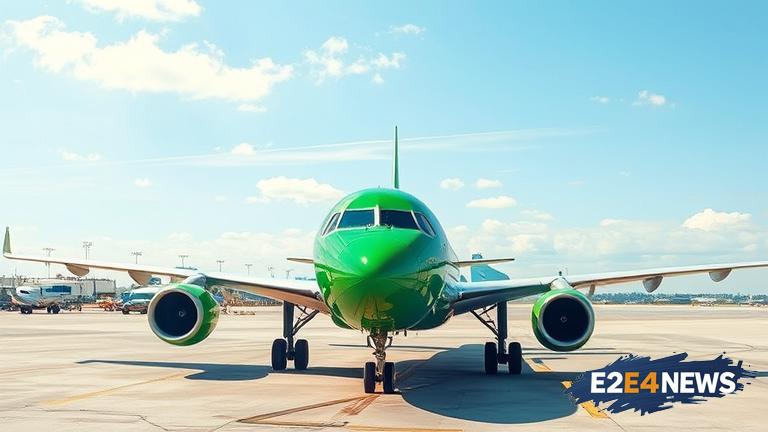The phenomenon of new airplanes being painted green has been a subject of interest and speculation in recent times. At first glance, it may seem unusual or even aesthetically unpleasing to see a brand-new aircraft coated in a green layer. However, there is a logical and practical explanation behind this practice. The green paint, also known as primer, serves as a protective coating for the airplane’s surface. It prevents corrosion and damage from environmental factors during the manufacturing and testing phases. This coating is especially crucial for aircraft made from aluminum, as it helps to prevent the metal from reacting with oxygen and moisture in the air. The green primer also provides a uniform base for the final paint job, ensuring that the colors appear more vibrant and even. Moreover, the primer helps to fill in any minor imperfections on the aircraft’s surface, resulting in a smoother finish. The use of green primer is not unique to the aviation industry, as it is also commonly used in the automotive and construction sectors. In the context of airplanes, the green coat is typically applied after the manufacturing process and before the aircraft is delivered to the customer. The final paint job, which includes the airline’s logo and color scheme, is then applied over the primer. It is worth noting that not all new airplanes are painted green, as some manufacturers may use different types of primer or coating systems. Nevertheless, the green primer has become a standard practice in the aviation industry due to its effectiveness in protecting the aircraft’s surface. The practice of using green primer on new airplanes has been in place for several decades, with many aircraft manufacturers adopting this method. The benefits of using green primer are numerous, including reduced maintenance costs, improved durability, and enhanced appearance. Furthermore, the green coat helps to reduce the risk of damage from extreme temperatures, humidity, and exposure to chemicals. In addition to its practical applications, the green primer has also become a recognizable feature of new airplanes, symbolizing the beginning of a new journey for the aircraft. As the aviation industry continues to evolve, it is likely that the use of green primer will remain a standard practice, given its proven track record of effectiveness. In conclusion, the green paint on new airplanes is not just a cosmetic feature, but a vital component of the manufacturing process that plays a crucial role in protecting the aircraft’s surface and ensuring its longevity. The next time you see a green-coated airplane, remember that it is not just a peculiar sight, but a testament to the attention to detail and commitment to quality that defines the aviation industry. With the increasing demand for air travel and the subsequent growth of the aviation sector, the use of green primer is likely to continue, serving as a reminder of the industry’s focus on safety, durability, and performance. The green coat may seem like a minor detail, but it is a critical aspect of the airplane’s lifecycle, from manufacturing to delivery and beyond. As such, it is essential to appreciate the significance of this practice and the role it plays in ensuring the reliability and efficiency of modern air travel.
